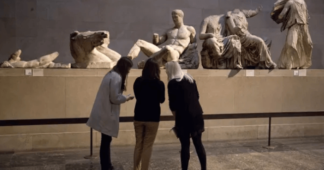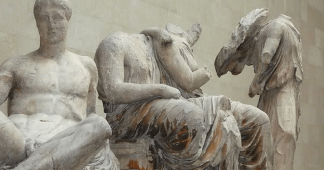Greek painter Alekos Fassianos, one of the country’s greatest 20th century artists, was laid to rest Tuesday at a funeral in an Athens suburb attended by the prime minister, senior officials and hundreds of mourners.
Jan 18, 2021
The artist, who died at the age of 86, was buried in the cemetery of Papagou, the northern Athens district where he lived out his final years.
Prime Minister Kyriakos Mitsotakis and Culture Minister Lina Mendoni were among a few hundred people who attended the ceremony.
“He is with us. He will always be there,” the artist’s wife Mariza told AFP, standing next to her children Viktoria and Nikola.
“Alekos Fassianos was the painter of Greece, of Greek colour, of Greek authenticity,” Mendoni told AFP at the funeral.
In a tribute to the artist Sunday, Mitsotakis said Fassianos had “generously given colour to (Greek) daily life” and that his work was “always balanced between realism and abstraction.”
Known around the world
Born in Athens in 1935, Fassianos was best known for his distinctive brightly coloured cherubic figures, inspired by ancient Greek heroes and angels, and mostly done in blue and red.
“I like red and blue, but not in abstract form. Colour should always have meaning!” he wrote in 1964.
The grandson of a parish priest and son of a composer, Fassianos initially studied violin for 12 years.
He then enrolled at the Athens School of Fine Arts of the National Technical University of Athens under famed Greek master Yiannis Moralis.
In 1960 he received a scholarship from the French government to study lithography at the Ecole des Beaux-Arts in Paris.
Continue reading at www.france24.com
We remind our readers that publication of articles on our site does not mean that we agree with what is written. Our policy is to publish anything which we consider of interest, so as to assist our readers in forming their opinions. Sometimes we even publish articles with which we totally disagree, since we believe it is important for our readers to be informed on as wide a spectrum of views as possible.











